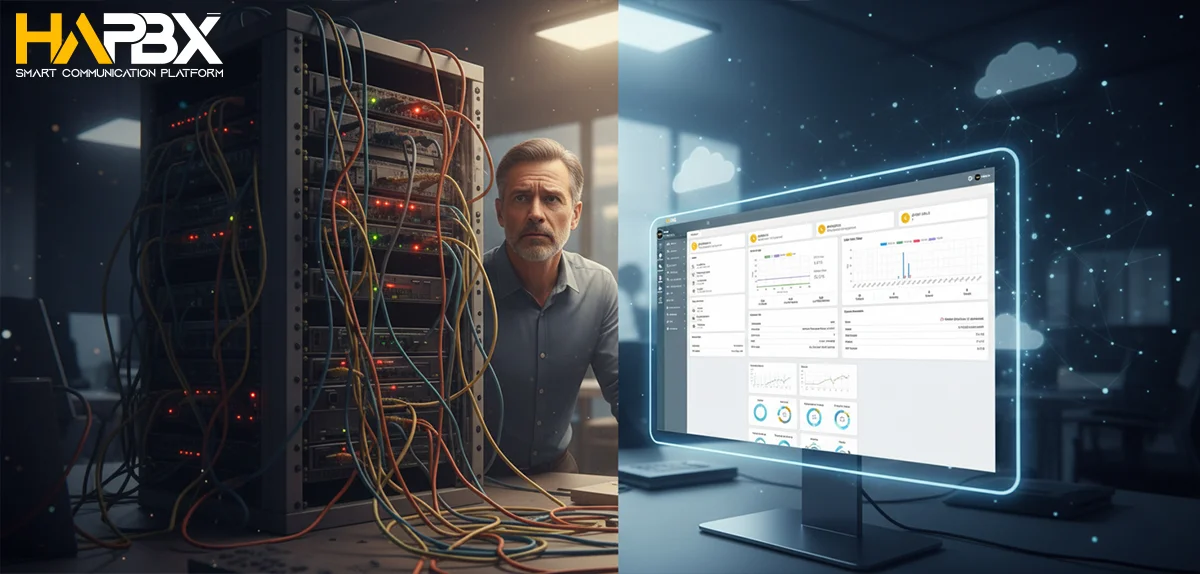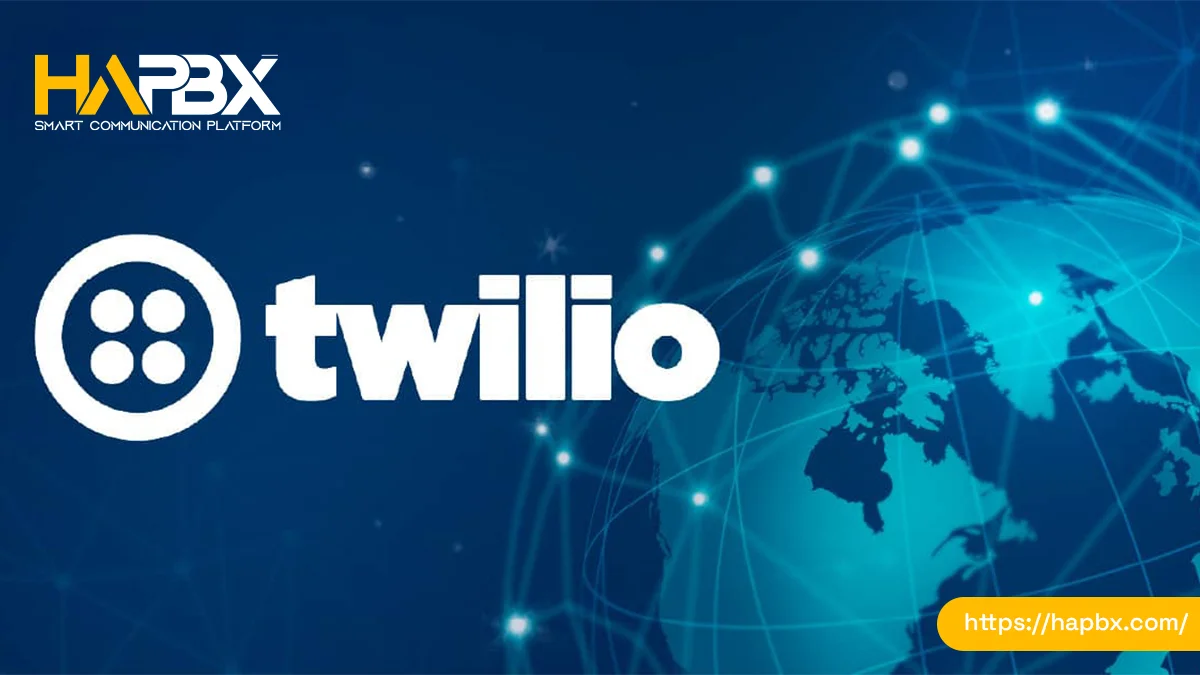In 2026, outdated phone systems can no longer keep up with hybrid work and AI-driven operations. The modern PBX business phone system unifies voice, video, chat, and CRM — ensuring seamless, scalable communication for business growth.
1. What Is a PBX Business Phone System?
PBX stands for Private Branch Exchange, a private network that manages all incoming and outgoing calls within an organization.
Traditionally, it acted as an in-house switchboard, allowing multiple internal extensions to share a few external lines.
In 2026, the PBX business phone system has become entirely software-driven. Using VoIP (Voice over Internet Protocol), it routes calls through the internet instead of copper wires — offering limitless flexibility, scalability, and integration with modern tools like Microsoft Teams, Zoom, and CRMs.
2. Why 2026 Is the Year Businesses Can’t Ignore PBX Upgrades
Over the last decade, business communication has evolved faster than ever before. The rise of hybrid work, digital customer service, and global collaboration has transformed how organizations connect — both internally and externally. Yet, many companies are still relying on legacy PBX systems built for an era of desk phones and static offices.
Delaying an upgrade is no longer a neutral choice — it’s a growing liability. Businesses that postpone modernization face operational bottlenecks, declining customer satisfaction, and increasing exposure to data breaches. These risks don’t just slow performance — they compromise growth and competitiveness.
Here’s why 2026 marks the tipping point for PBX modernization:
End of Legacy Support
By 2026, most hardware-based PBX vendors will discontinue technical support, security updates, and replacement parts. When critical components fail, businesses won’t just face downtime — they’ll face system paralysis. Without manufacturer backing, even small failures can escalate into full-scale communication outages.
The Normalization of Hybrid Work
Nearly 70% of global teams now operate remotely or in hybrid mode, demanding seamless access to voice, video, and messaging across locations and devices. Traditional PBX systems weren’t built for this level of flexibility — they’re confined to office walls and physical wiring. A modern PBX business phone system like HaPBX removes those limits, giving teams the power to connect anywhere, securely and instantly.

Rising Customer Experience Expectations
Customers no longer tolerate fragmented communication. They expect instant, omnichannel access — whether through calls, live chat, or video consultations. Legacy PBX setups can’t integrate with CRM platforms or digital channels, causing missed opportunities and slow response times. A unified system bridges every touchpoint, turning communication into a competitive advantage.
Tightening Regulatory and Security Standards
With frameworks like GDPR, ISO 27001, and industry-specific compliance laws becoming the norm, outdated PBX systems are security liabilities. Most lack built-in encryption, audit trails, or centralized security management. Modern cloud PBX solutions meet these standards by design — with end-to-end encryption, automatic software updates, and redundancy architecture that protects data integrity.
3. The Core Benefits of a Modern PBX Business Phone System
Unified Communications
Modern businesses thrive on speed, clarity, and collaboration — yet traditional setups scatter communication across multiple tools. A unified communications platform brings it all together: voice, video, messaging, and CRM integration under one interface.
No more switching between disconnected apps or missing critical updates in email threads. Teams can chat, call, meet, and collaborate on customer data in real time — wherever they are. Whether it’s a quick internal check-in or a client presentation across continents, unified PBX communication ensures conversations stay fluid, transparent, and instantly accessible.
With HaPBX, every interaction becomes a connected experience — from the first customer call to ongoing support and internal teamwork.
Scalability
Growth should never be limited by hardware. Traditional PBX systems require physical lines, on-site servers, and costly installations whenever a business expands. In contrast, cloud-based PBX redefines scalability.
Adding a new user, department, or even an international branch can be done within minutes — no rewiring, no waiting for technicians. Whether you’re onboarding five employees or five hundred, the process remains fast, remote, and disruption-free.
HaPBX adapts as your organization evolves — giving IT teams centralized control, and leadership the flexibility to scale communication infrastructure in real time.
Lower Total Cost of Ownership (TCO)
Legacy PBX systems are deceptively expensive. Between maintenance contracts, repair costs, hardware upgrades, and hidden carrier fees, operational costs can spiral quickly.
Modern PBX platforms eliminate those inefficiencies through a subscription-based model — transparent, predictable, and cost-efficient. There’s no need for expensive on-premises servers or dedicated IT support for routine upkeep.
With HaPBX, organizations enjoy lower upfront investment, automatic updates, and reduced maintenance overhead, allowing budgets to focus on growth initiatives instead of patching outdated systems.
Enterprise-Grade Security
In today’s threat landscape, communication security is not optional — it’s mission-critical. Data breaches, call interceptions, and unencrypted transfers can expose sensitive information, damage reputations, and violate compliance standards.
HaPBX safeguards your communication ecosystem with end-to-end encryption, automatic backups, and multi-layer redundancy that keeps operations online even during unexpected outages.
Additionally, built-in role-based access control and compliance-ready logging ensure alignment with global frameworks such as GDPR, ISO 27001, and other industry regulations. The result is peace of mind — knowing that every call, message, and video session remains protected by enterprise-grade security architecture.
Future-Ready Design
Business models are changing faster than ever. With remote and hybrid work becoming the norm, companies need systems that are flexible by design — not retrofitted as an afterthought.
Modern PBX platforms like HaPBX are engineered for this reality. Whether your teams work from offices, homes, or halfway across the world, the system ensures seamless communication across devices and time zones.
Its mobile-first architecture supports smartphones, laptops, and desk phones equally, empowering employees to stay connected wherever business takes them. As your organization adopts new tools and channels, HaPBX integrates effortlessly — future-proofing your communication stack for the demands of 2026 and beyond.
HaPBX transforms communication from a cost center into a growth enabler — connecting people, processes, and customers under one intelligent cloud ecosystem.

4. Comparing PBX Models: On-Premise, Cloud, or Hybrid?
When evaluating a PBX business phone system, one of the biggest decisions is where it lives.
| Model | Description | Pros | Cons |
| On-Premise PBX | Hardware installed in your office, fully managed by your IT team. | Full control, internal security, one-time licensing. | High upfront cost, limited scalability, complex maintenance. |
| Cloud PBX / UCaaS | Hosted by a provider and accessed via the internet. | Low initial cost, remote access, automatic updates, quick setup. | Internet-dependent, long-term subscription costs. |
| Hybrid PBX | Combines on-premise control with cloud flexibility. | Customizable, disaster recovery ready, balanced approach. | Requires integration expertise, dual management. |
Most modern businesses — especially those expanding globally — are now choosing cloud or hybrid PBX for scalability and uptime.
5. Why HaPBX Leads the Market in 2026
HaPBX has emerged as one of the most advanced PBX business phone systems designed for the next decade. Built for scalability, security, and integration, it provides a future-proof foundation for digital collaboration.
| Feature | HaPBX | 3CX | RingCentral | Zoom Phone |
| Deployment Options | Cloud, Hybrid, On-Prem | On-Prem & Cloud | Cloud only | Cloud only |
| Unified Communications (UC) | Full suite (voice, video, chat, CRM) | Partial UC | UC with limited CRM | UC with limited CRM |
| CRM Integration | Built-in native integration | Limited | Add-on | Limited |
| Scalability | Instant user & branch addition | Manual setup | Scalable | Scalable |
| Cost Model | Transparent subscription | License-based | Subscription | Subscription |
| Security | End-to-end encryption, redundancy | Basic TLS | AES encryption | AES encryption |
| Support | 24/7 Enterprise-grade | Regional | Regional | Global |
| Customization | Fully open API | Moderate | Limited | Limited |
Why it matters: HaPBX isn’t just a communications tool — it’s a business enabler that grows with your organization.
6. The Real Risks of Delaying Your PBX Upgrade
Waiting until your legacy PBX fails is a costly mistake.
When that happens, you’re not just losing calls — you’re losing productivity, customer trust, and potentially compliance certification.
Common warning signs include:
- Frequent call drops or jitter
- Rising maintenance fees and unavailable spare parts
- Missing 2026-ready features (video, CRM sync, softphones)
- Difficulty adding remote users or branches
- Outdated hardware with no vendor support
If any of these describe your current setup, your business is already behind.
7. How to Plan a Seamless PBX Transition
Transitioning to a modern PBX business phone system doesn’t need to be disruptive. Follow these best practices:
Audit Your Existing Infrastructure
Assess bandwidth, device compatibility, and usage patterns.
Choose the Right Deployment Model
Cloud for flexibility, hybrid for control, on-prem for compliance-heavy industries.
Map Out Integrations
Identify your key CRMs, helpdesk tools, and analytics platforms.
Set Clear Security Policies
Define encryption, access control, and data retention policies before rollout.
Train and Test
Conduct pilot testing and user training before full-scale deployment.
HaPBX offers guided migration services — ensuring zero downtime and smooth adoption.

8. Future Outlook: PBX in the AI and IoT Era
By 2026, PBX systems will no longer just connect people — they’ll connect data, devices, and automation tools.
Expect deep AI integration:
- Voice analytics to measure sentiment and quality.
- AI-driven routing to direct calls intelligently.
- IoT connectivity to link communication systems with smart offices.
The businesses adopting intelligent PBX solutions today will lead tomorrow’s digital economy.
9. The Bottom Line: 2026 Will Reward the Prepared
“Delaying your PBX upgrade until the system collapses isn’t a cost-saving strategy — it’s a business risk.”
In a world where uptime, mobility, and data security define competitiveness, communication infrastructure must evolve.
With HaPBX, you’re not just upgrading your phone system — you’re securing business continuity, empowering collaboration, and preparing for an AI-driven future.
Your customers, employees, and partners will feel the difference from day one.
10. Q&A: Common Questions About PBX Business Phone Systems
Q1: How long does it take to upgrade to a modern PBX?
Depending on your business size, small teams can transition within days, while large enterprises may phase migration over several months.
Q2: Can I keep my existing phone numbers?
Yes. With number portability, your existing numbers remain active during the transition.
Q3: Does a cloud PBX require special hardware?
No. Most systems use existing IP phones or even softphones on laptops and mobile devices.
Q4: Will it cost more than my current PBX?
Usually not. While migration has a one-time setup cost, subscription-based PBX reduces maintenance, upgrades, and downtime expenses.
Q5: Can HaPBX support global offices?
Absolutely. HaPBX’s cloud infrastructure supports multi-region deployments under one unified dashboard.
Q6: How secure is a cloud PBX?
HaPBX uses enterprise-grade encryption, automatic backups, and multi-factor authentication to protect every communication channel.
Upgrade Before You’re Forced To
2026 isn’t the year to react — it’s the year to lead.
Upgrade now with HaPBX, and step into the era of seamless, intelligent communication.
👉 Book a free consultation today and experience how HaPBX can future-proof your business.




